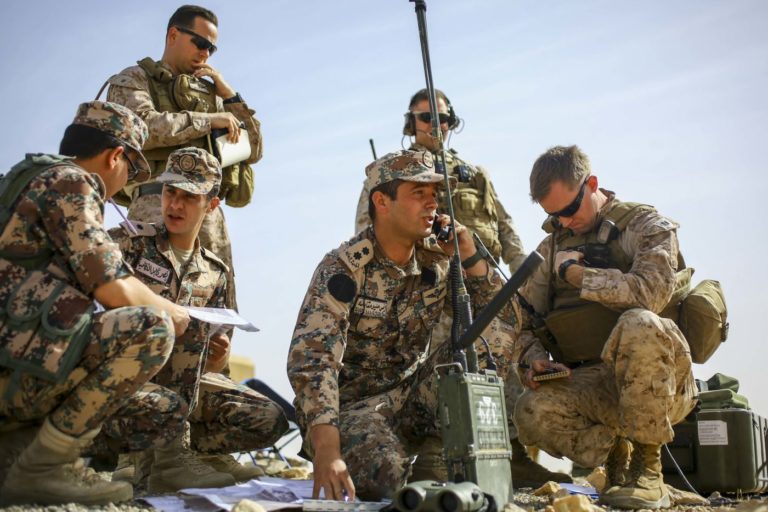Implementing Security Cooperation Reform to Maximize U.S. Competitiveness Abroad
Assessing Defense Reform Series

Security cooperation enables the United States to deepen its global alliances and partnerships in pursuit of common security objectives. Ongoing changes in the geopolitical landscape and increasing public skepticism of the return on investment for security cooperation, including from President-elect Donald Trump, underscore the need for the new administration and Congress to work together to strengthen the strategic prioritization, planning, execution, and accountability of the security cooperation enterprise. Provisions in the proposed FY17 National Defense Authorization Act (NDAA) will further those objectives, but implementation challenges remain within the Department of Defense (DoD), across the U.S. national security system, and in the field. These reforms are critical to ensure the United States retains its competitive advantage globally through its network of alliances and partnerships.
Issue
For 70 years, the United States has built strong alliances and robust partnerships globally to secure U.S. interests and objectives, leveraging security cooperation as a tool to advance those relationships. Through various security cooperation and grant security assistance programs led primarily by the Department of State (DoS) and DoD, the United States works with allies and partners to enhance their security capability and capacity. This endeavor is important in two ways. It enables allies and partners to provide better for their own security. Allies and partners also develop the ability to better contribute to collective security through targeted missions (including countering terrorism and countering weapons of mass destruction proliferation), securing access to strategic air, land, and sea nodes, and improving interoperability with U.S. forces.
The post-9/11 era prompted a substantial expansion in security cooperation authorities, but the planning, processes, personnel, execution, and accountability systems have largely not kept up with worldwide swelling demand. Meanwhile, China and Russia have expanded their security partnerships and influence globally, and non-state actors move more nimbly to erode U.S. partners’ security in ways that could diminish the U.S. competitive advantage if the United States does not reform its security cooperation efforts.
The FY2017 National Defense Authorization Act requires changes to address many security cooperation challenges within DoD. The reforms include: consolidating approximately 30 different authorities to six, including a single train-and-equip authority; establishing a unified, annual security cooperation budget for DoD[1]; mandating a stronger assessment, monitoring, and evaluation program to track security cooperation return on investment; requiring a new DoD program management and policy oversight structure;[2] creating a workforce professionalization and reform program to train, certify, assign, and sustain a dedicated security cooperation workforce; and expansion of the Special Defense Acquisition Fund.
The Trump administration will encounter several challenges as it determines how best to implement the NDAA reform provisions. First, there are limits to what DoD alone can do to strategically prioritize security cooperation. For example, the current Foreign Military Financing (FMF) program allocation process, under DoS oversight and in coordination with DoD favors Middle East allies and partners, especially Israel and Egypt. It underserves other priority allies and partners in Europe and, particularly, Asia. Shifting FMF allocations to account better for global priorities would be extraordinarily difficult, particularly in Congress.
Second, even security cooperation resource allocation within DoD will be hotly contested among advocates who favor alignment with specific missions (e.g., counterterrorism, counter narcotics, and maritime security), current operations (e.g., operations in the Middle East, Afghanistan, and Africa), and those seeking to counter high-end state-competitors such as Russia and China, absent a strategic approach to cut across regional and functional stovepipes.
Finally, the military departments do not prioritize security cooperation as a career track, as they do for operational and war-fighting careers; similarly, the DoD civilian workforce has uneven competencies for security cooperation policy oversight and program management. These workforce gaps impede effective planning, delivery, and accountability for security cooperation in departments and agencies and in the field.
Recommended Changes
The United States derives great benefit from its security cooperation relationships around the world. Maximizing the effects of these efforts, including reaping the full benefits of the FY2017 NDAA reform provisions, will require leadership from the Trump Administration to further reshape and focus efforts on security cooperation. Several specific actions should lead this agenda:
- Ensure that security cooperation and grant security assistance (such as FMF) flow from strategic priorities set not only by DoD but also across the interagency. The Trump Administration will want to chart its own path; lessons learned from the requirements of Presidential Policy Directive 23 on Security Sector Assistance Policy could serve as a useful starting point. This will involve the development of integrated country strategies formulated at the embassy-level and coordinated with all arms of government, to include DoD and the relevant combatant command(s);
- Conduct a re-baselining effort for FMF allocations, consistent with the Administration’s national security priorities and national security strategy.
- Develop a process between DoD and DoS for the prioritization, planning, execution, and assessment of security cooperation activities, including synchronization with DoD’s contingency and operational planning cycles. Allocate resources to meet cross-functional and regional security cooperation objectives that are specific, measurable, assignable, and achievable for defense objectives to break down regional and functional stovepipes;
- Integrate monitoring and evaluation methods used in the development sector for security assistance through a process that links top-down strategic and policy objectives and bottom-up assessment and analysis from the embassy country teams and combatant commands; and,
- Establish military and civilian career pathways for a professional security cooperation workforce that include assignments at DoD, DoS, and at the country team-level, building in incentives and training programs to encourage recruitment and retention.
Footnotes
[1] This unified, annual budget will include funds for security cooperation activities in the budgets of the individual Military Departments that were previously obscured in different accounts.
[2] This new structure includes mandating a single Office of the Secretary of Defense office to provide policy guidance and prioritize and assess tradeoffs across programming and making the Defense Security Cooperation Agency Director responsible for all execution and administration of security cooperation activities.

